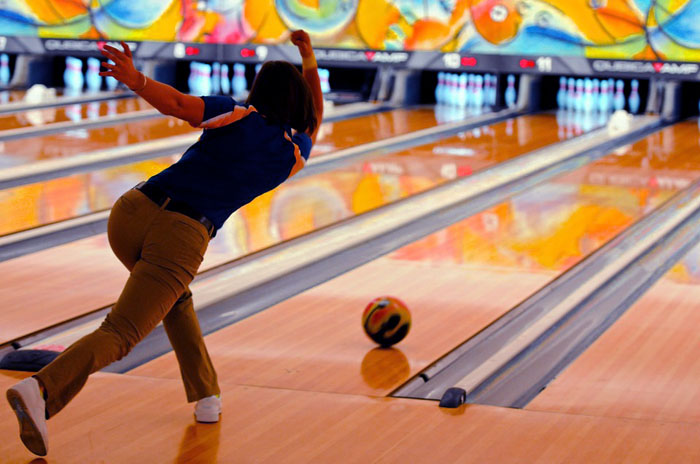Maximum ball speed is achieved at the point of release. As soon as the ball is released, it will begin to slow down because of the friction between the bowling ball and the bowling lane. A bowling ball will typically lose about 3 to 3½ mph from the time it is released until the time it hits the pins.
There are several factors which will affect the amount of decrease in ball speed. The greatest effect is the amount of friction created between the ball and the lane as it travels towards the pins. If you are bowling on lanes that have a high amount of oil on them, your ball will slow down less. Conversely, if you are bowling on lanes that have a small amount of oil on them your ball will slow down more. The type of ball used and the mass of the ball also affects the amount of friction between the ball and the lane.
Typically, a ball speed at release of less that 17 mph is considered slow, 17 to 19 mph average, and greater than 19 mph is considered fast. I have read of a maximum ball speed measured at 25 mph, but I am not sure of this.
How to Calculate Ball Speed
A simple way of calculating ball speed is to time how long it takes for the ball to travel the length of the lane. The lane length is 60 feet (18.3 m) from the foul line to the pins (see lane dimensions). Using a stopwatch, you need to time how long it takes from ball release till pin strike. The ball speed is calculated dividing the distance by the time. If the time was 3 seconds, the average speed will be 60/3 = 20 feet per second (6.1 m/sec). Of course this is only the average ball speed, the speed of the ball at the time of release would be greater. The ball speed would decrease along the length of the lane due to friction.
 tenpin bowling can be physically taxing
tenpin bowling can be physically taxingAnother way of calculating ball speed is from video analysis. You will need to have video footage from directly side-on, a calibration mark that can be viewed on the screen, and you need to know the frame rate of the video. See calculating distance from a video. The procedure is similar to calculating segment velocities on the bowling biomechanics pages.


 Current Events
Current Events